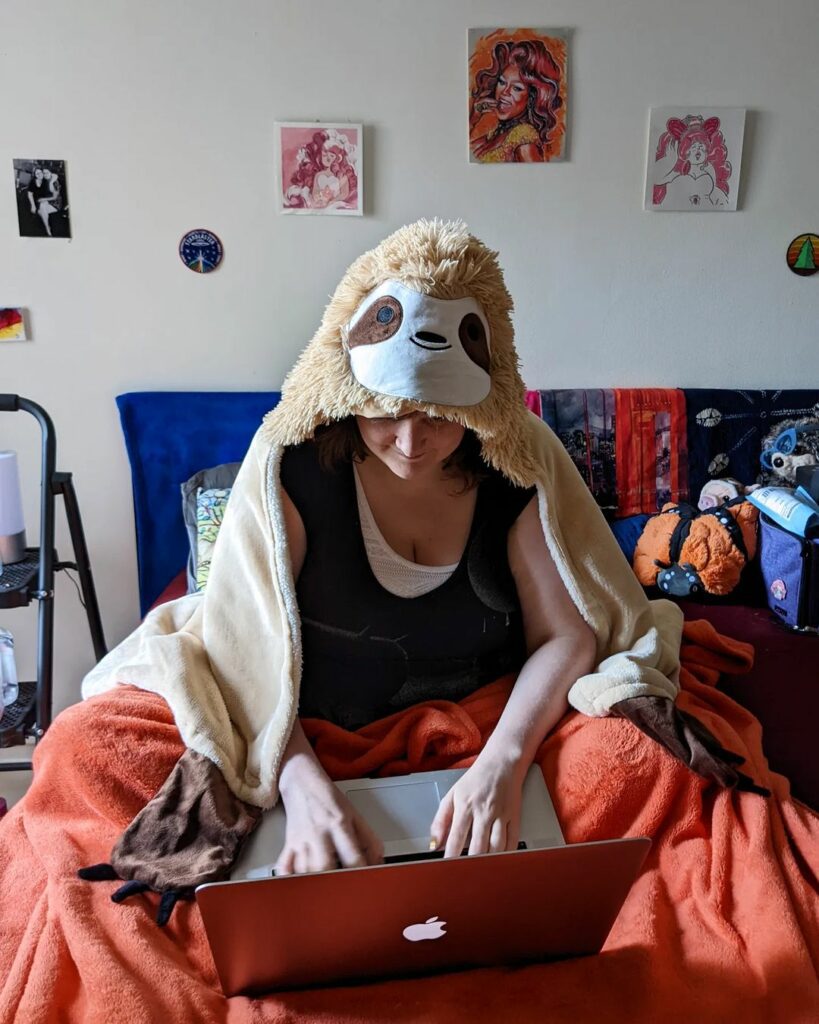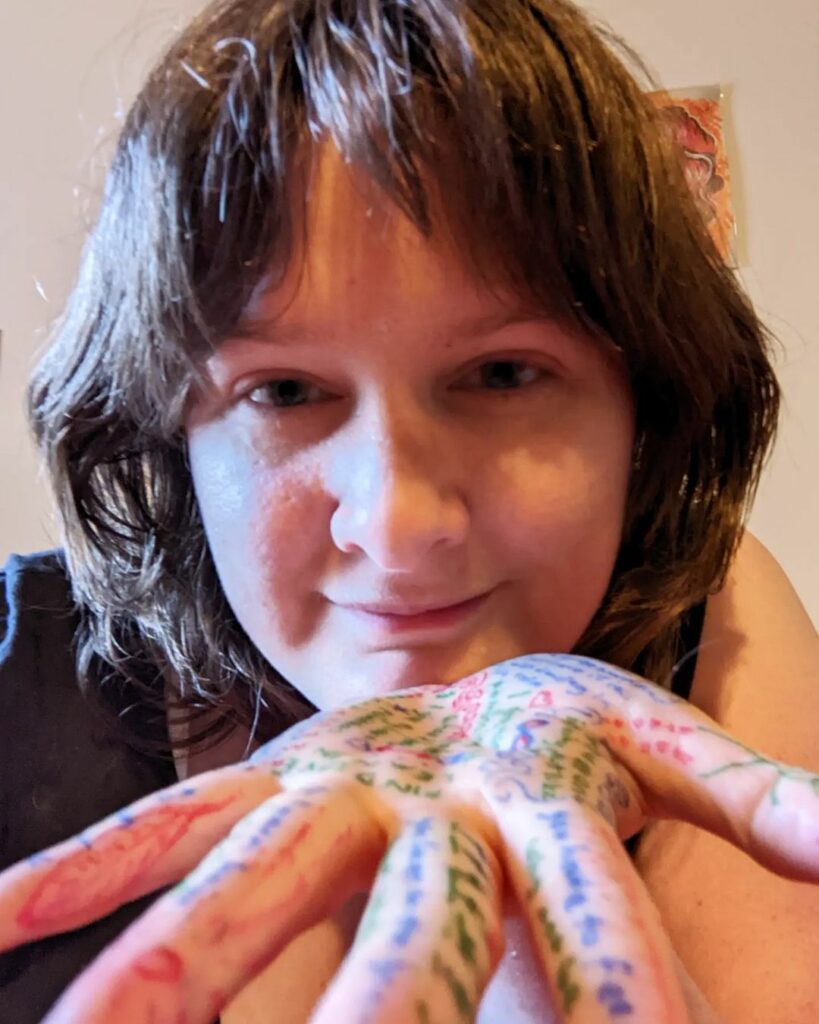This article uses identity-first language (“autistic person”) over the more common person-first language (“person with autism”), in accordance with the preferences of the autistic community.
When I finally got access to exposure and response prevention (ERP), thirty years after my OCD started, I was ready for it. I wasn’t scared of exposures causing distress, because I was already in distress. Why not try being in distress for a good reason? If ERP was my escape rope, I was willing to endure a little rope burn. But what I was scared about was my autism.
Let’s be clear: I’m incredibly proud to be autistic. Autism isn’t a disorder, it’s a neurotype, just as valid and important as any other. That doesn’t mean it doesn’t come with challenges—it’s just that most of those challenges are due to how society treats us. And unfortunately, mental health professionals are often trained to see autism in a very different light to mine.
So I was scared that my ERP therapist wouldn’t know anything about autism, or that they would think they knew about autism, but that everything they knew would be harmfully wrong. The more I ruminated about it, the more new fears would come into play. What if they tried to use ABA on me? (Applied Behavior Analysis, or ABA, is a common intervention for autistic children, and my childhood experiences of it were deeply traumatizing.) What if ERP didn’t work on me because I was autistic? Some studies have found CBT is less effective for us. What if, what if, what if?
Luckily, I knew enough about OCD to identify these thoughts for what they were. I chose to sit with the uncertainty and do ERP anyway, and I’m glad I did, because it saved my life. But even though those fears were unfounded, ERP did still end up looking a bit different for me. It took time and experimentation for my therapist and me to find ways of doing ERP that worked with my neurotype, not against it. This is far from an exhaustive list, but here’s what some of those adaptations looked like:
1. One of my fears was correct: my therapist didn’t know much about autism. But in the end that didn’t matter: what mattered was they were willing to learn. I deferred to them as the expert on OCD, and they deferred to me as the expert on autism. By collaborating on the autism/OCD aspects of my treatment, we were able to pool our knowledge and come up with creative solutions. I didn’t need my therapist to be an autism expert—I just needed them to be neurodiversity-affirming and willing to both lead and listen.
2. An important part of my ERP was making it feel mine. By incorporating my special interests and the language I used around OCD, my therapist helped me feel invested in therapy. If I came up with a metaphor I liked, they would make it part of their regular vocabulary. When I needed help regulating, they would ask me about my special interests. (Nothing calms me down faster than ranting about my passions.) I have a RuPaul’s Drag Race SUDS scale, and a whole theory about how Hamilton is a metaphor for OCD. All this personalization helped me stay motivated, but it also leveraged my autistic strengths in the service of my ERP journey.
3. Sensory issues were a challenge. It’s hard to sit with a perfectionism exposure when your cat howls outside and suddenly your brain has short-circuited and you’re sobbing uncontrollably. It didn’t help that my OCD tends to latch on to sensory issues. Autistic sensory sensitivities don’t habituate, making sensory exposures painful and useless, but I still had to address my OCD around them. To minimize meltdowns, my therapist directed me to take a step back from exposures if sensory overload got too high, take a moment to do some sensory regulation (stimming, etc.), and then go back into the exposure. As I went through ERP, my overall stress and anxiety went down, which made sensory disruptions less frequent.
4. Speaking of stimming (self-stimulatory behavior like hand flapping, rocking, or leg jiggling): stimming is NOT a compulsion, it’s a healthy regulatory behavior, but it can sometimes be hard to tell the difference. (Pro tip: if you can substitute a repetitive behavior for another one without added anxiety, it’s probably a stim. If your brain insists you have to do this one specific behavior or else, it’s probably a compulsion.) My therapist and I took time early on to discuss my preferred stims and when to use them, which helped me use stims effectively during ERP and allowed my therapist to prompt me to stim when appropriate.

5. One fear that lingered was that ERP wouldn’t work for me because I was autistic. The main solution for that, of course, was exposures! But it also helped to learn that autistic people in ERP often benefit from behavioral approaches. Hearing this might have been a red flag—autistic people get subjected to a lot of harmful behaviorism—had it not been my exact experience. It turned out I found hands-on exposures much more effective than imaginal exposures or things like CBT charts. Recognizing that helped my therapist and I focus on the exposures that worked best for me.
6. The other fear that lingered was that I wouldn’t always be able to tell what was my autism and what was OCD. A lot of autistic behaviors resemble OCD, but they happen for completely different reasons, and I was scared of approaching something the wrong way and making it worse. My therapist encouraged me to sit with the uncertainty and resist the urge to figure out exactly what was what. They said I didn’t always need to know for sure to experiment and find solutions—and by and large, they were right. This question comes up a lot in the NOCD Autism & OCD support group that I co-run, and I always tell them the same thing.
7. Finally, it was really helpful to recognize just how much of my OCD was related to my autism. Perfectionism around masking, social interactions, or regulating executive dysfunction; moral scrupulosity latching onto my autistic sense of justice; health anxiety about my sensory sensitivities. ERP helped me realize that for most of my life, I had been using OCD as a maladaptive coping mechanism to survive in a hostile world, and knowing that meant I could shake off my reliance on OCD and start practicing healthier skills.
I went into ERP feeling very alone. Despite an estimated 17% of autistic people having OCD, there’s very little information and support out there for the intersection. I am privileged to have the knowledge and background to teach therapists about my neurotype, but people shouldn’t have to be able to do that to get care. That’s why I’m so grateful to be able to work with NOCD in increasing understanding and services for this neglected community. One of the great joys of my recovery (and yes, ERP worked, I’m in recovery! You can read more of my story here) is being able to advocate for autistic people with OCD in ways that make all of us a little less alone.

